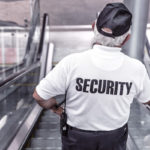Security Measures For Large Events
With the big game going down this Sunday, security for large-scale events is on our minds. Unfortunately, heavily publicized events that draw substantial attendance and large crowds tend to be prime targets for attacks and incidents. Luckily, proper security measures can prevent dangerous incidents from escalating further, or, ideally, from even happening at all. Here are a few things to keep in mind when it comes to event security.
- Security Posture
It is crucial to make security efforts visible. Bag checks, vehicle-free zones, and uniformed personnel make all the difference. - Constant Vigilance
Security personnel should be prepared to handle the crowd beforehand and screen every guest that enters, but security measures should remain in place throughout the entire event. It may be feasible to reduce some personnel when a majority of attendees have entered, however, no one should be able to enter the facility at any time without going through the same screening as everyone else. Once the event is underway, it makes it easier for potential attackers to move without being noticed. - Outdoor Security
If you uphold strong indoor security, an attacker may decide to carry out his actions outside. This makes it vital to maintain additional security measures around the perimeter and beyond (ex. mass transit connections, tailgate areas, merchandise locations). Typically, perpetrators will target large, dense gatherings of people. Spreading out locations to disperse crowds with ample security personnel makes it difficult for attackers to select a prime target. - Layers Of Security
As you may already tell, several layers of security are crucial. For example, your first layer of security may be traffic control personnel, who limit vehicle access to the venue and can watch for suspicious activity and individuals. Another layer may be personnel looking for potential criminal behavior in parking lots or directly outside the venue. Next would be the bag checks, magnetometers, and pat-downs to ensure prohibited items stay out of the venue. On the inside, you want to monitor the activities and prepare for the appropriate response, such as getting individuals to exits safely and getting emergency responders to the scene of an incident quickly. - Communication
Keep attendees informed about prohibited items and any other policies and rules before the event. These communications can be distributed with the help of ticketing outlets and public media. Getting this information out beforehand will help security lines and bag checks move smoothly and quickly, decreasing traffic and delays at the entrances. - Offsite Security Command Center
It makes sense to maintain a security command center onsite so that it is easy for people to find them if necessary. However, perpetrators know they can inflict more damage if they take down the command and communications center first. To combat this, while still maintaining an office within the venue, many facilities are moving the main command center offsite. By doing so, should an incident occur and the onsite center is compromised, security will still have eyes and means of communicating with the security personnel on site and still coordinate an appropriate response.
Tragic events over the years have forced us to reevaluate and tighten our security measures to keep the public safe. Now more than ever, security and emergency response personnel must work together to prevent and respond to major incidents. As an attendee, remember to be aware of your surroundings, and if you see something, say something.
For affordable, quality security systems, visit SecurityCamExpert.com or call 888-203-6294! We are happy to provide you with a free quote, schedule a site survey, or assist you with any questions you may have. You may also connect with us on Facebook, Google+, Twitter, LinkedIn, and Pinterest.
Stay Safe This Halloween
When you think of Halloween, fun things like candy and costumes come to mind. But Halloween is also a dangerous night, as both vehicle and pedestrian traffic increases. Vigilance and early planning can help to ensure safety.
If you have surveillance cameras, they can help give you a sense of security and deter bad behavior. Before Halloween night, be sure that your security cameras are working properly. If you are out trick-or-treating or at a party, you can access your live feed to ensure that your property is safe. If you are at home, you can see when trick-or-treaters approach while monitoring for mischievous behavior or vandalism.
Below are more Halloween safety tips to keep your kids and loved ones safe.
- Avoid oversized costumes or costumes with excessive flowing fabric, such as capes or long sleeves. These pose a risk as loose clothing can graze a jack-o-lantern or open flame. Also, oversized costumes can cause kids to trip and fall. Be sure that costumes fit appropriately and check to see that shoelaces are tied before heading out.
- If possible, choose a brightly colored costume that drivers can spot easily. You can also use reflective tape or stickers, glow sticks or flashlights to increase visibility.
- Face paint and makeup are a safer choice than masks, which may obstruct vision. If a mask is worn, make sure that it fits properly and securely, and whenever possible, cut large eye holes.
- Inspect the treats. Anything that is tampered with, has loose wrappers, or just doesn’t seem right should be disposed. Also, homemade treats should be trashed, unless you know the person who gave it to your child and are sure that it is safe.
- Children under the age of 13 should always be supervised by an adult. Older teens should trick-or-treat in groups and have a set curfew. Creating a route ahead of time will help to keep track of your kids as well.
- Walk slowly. As with any other night, be mindful of cars and make eye contact with drivers. Always walk on sidewalks and cross at the crosswalks or traffic signals. If there are no sidewalks, then it is strongly advised to walk facing traffic and as far to the left as possible.
- Children should only go to well-lit houses and remain on the porch within street view. Also, remind children to never cross between parked cars and to look both ways before crossing.
- Drivers: back out slowly while keeping a watchful eye for children. High times for trick-or-treating are usually from 5:30pm-9:30pm. Distracted driving is dangerous and illegal, on Halloween and every day. If you must, pull over and park in a safe location, otherwise, it can wait.
Share your own Halloween safety tips with your peers and us on Facebook, Google+, Twitter, LinkedIn and Pinterest!
Visit SecurityCamExpert.com to browse our vast collection of quality security cameras and CCTV surveillance system packages. If you have any questions or would like to request a free quote, please feel free to call 888-203-6294.
California Surveillance Laws
When it comes to surveillance, there is a fine line between privacy and public safety. Because of this, surveillance laws are often scrutinized by both sides. A new bill was introduced at the end of 2016 which requires any local law enforcement agency in California that uses surveillance technology to submit a plan to local officials on how it uses equipment and information collected. This would need to include surveillance plans for any facial recognition software, drones, and even social media monitoring, and would be presented at an open hearing.
While this disclosure from law enforcement may put some worries at ease, others may want more. Privacy advocates believe that this is still not enough to cover spying equipment and technology that is continuing to evolve and expand. On the other side, law enforcement officials argue that creating plans and policies for each device may be unfeasible and interfere with investigations.
But state Senator Jerry Hill (D-San Mateo) says that it was introduced “to create transparency and a check and balance.” Without regulations on these devices and technology, they can easily be abused and infringe on our privacy rights.
With fairly comprehensive digital privacy laws, California has been actively working toward disclosure when it comes to law enforcement surveillance. State laws require a probable cause warrant for access to digital content and devices (ex. cell phones) and law enforcement must catalog information and make it publicly available.
The new bill gives agencies until July 1, 2018 to draft policies detailing all the types of surveillance technology used and the authorized reasons for using them, along with the types of data collected, who can access them, and a description of their training. It also prohibits an agency from acquiring new technology unless approved by local officials at a regularly scheduled public meeting.
Last year, two surveillance laws went into effect, one of which requires to draft and publicly post privacy and usage policies for operating automated license-plate recognition software. The other requires the same for the use of cell-site simulators (“Stingrays” or “Dirtboxes”). These are powerful tracking devices that function as fake cellphone towers to collect information. However, their ability to collect information from innocent people not under investigation has sparked outrage and court battles.
Despite current surveillance laws, privacy advocates believe that not all agencies are complying and that not enough is being done to ensure that they do. To evade the disclosure requirements, agencies could borrow technology from other federal agencies, which is not subject to state law.
In an effort to check compliance, the Electronic Frontier Foundation and other nonprofits and watchdog groups searched through numerous California government websites to make sure surveillance policies were posted. While many were easily located, policies for at least 90 agencies (which, based on public records, were believed to use surveillance technology) could not be found. Since this task in April 2016, more agencies have posted their policies online.
While the new bill is meant to be inclusive and comprehensive, concerns remain. Some worry that criminals may figure out how they are being tracked, others bring up issues of time sensitivity when it comes to buying or borrowing new technology, and privacy advocates are still skeptical about the cost, risks, and enforcement.
There are obviously mixed feelings about this new bill, and other surveillance laws. What are your views? Share your thoughts and opinions with us on Facebook, Google+, Twitter, LinkedIn, and Pinterest.
Keep an eye on your home or business with quality CCTV surveillance systems. Find a great selection at SecurityCamExpert.com or call 888-203-6294 to speak with a representative.
Police Body-Worn Cameras
With everything that has been going on lately, public safety is a main concern. In an attempt to increase public safety, several police departments are adopting body-worn cameras. While improvement on basic guidelines is still necessary, body-worn cameras are a major step forward.
Supporters of body-worn camera programs applaud the increased transparency and accountability that these tools provide. Because these cameras can record officer interactions with the public, this helps to bring clarity to day-to-day situations. This footage becomes even more helpful when details are unclear and stories conflict. Aside from this, officers and civilians alike can be held accountable for their actions, thus promoting public safety.
While these are in place with the public in mind, they can also help officers defend their actions when complaints are filed. An interim report by the President’s Task Force on 21st Century Policing from March 2015 found that there were fewer incidents of force and fewer complaints with officers donning body worn cameras than those without.
Criticism of these programs is related to privacy issues, footage review and public viewing policies. Many say that without public access to the footage, officer accountability will remain unchanged. For example, a North Carolina law makes dash cam and body cam footage exempt from public record. Also being argued is the fact that some jurisdictions allow officers to review the footage before they write their reports. This, combined with no public access to footage, creates an upper hand for the officers as they can shape their story based on the available evidence.
While this is an important concern, this is not the case for all departments as rules and regulations vary. Since the outlook for these cameras seems promising, guidelines regarding use and public access must be improved. Making these policies available for the public to review allows for better trust for law enforcement.
What are your thoughts on body-worn cameras for police? Share with us on Facebook, Google+, Twitter, LinkedIn, and Pinterest. If you would like to browse our selection of security cameras, CCTV surveillance packages, DVRs, NVRs, and more, please visit SecurityCamExpert.com. If you have any questions, please call 1-888-203-6294 Monday-Friday 8:00am-5:00pm.


